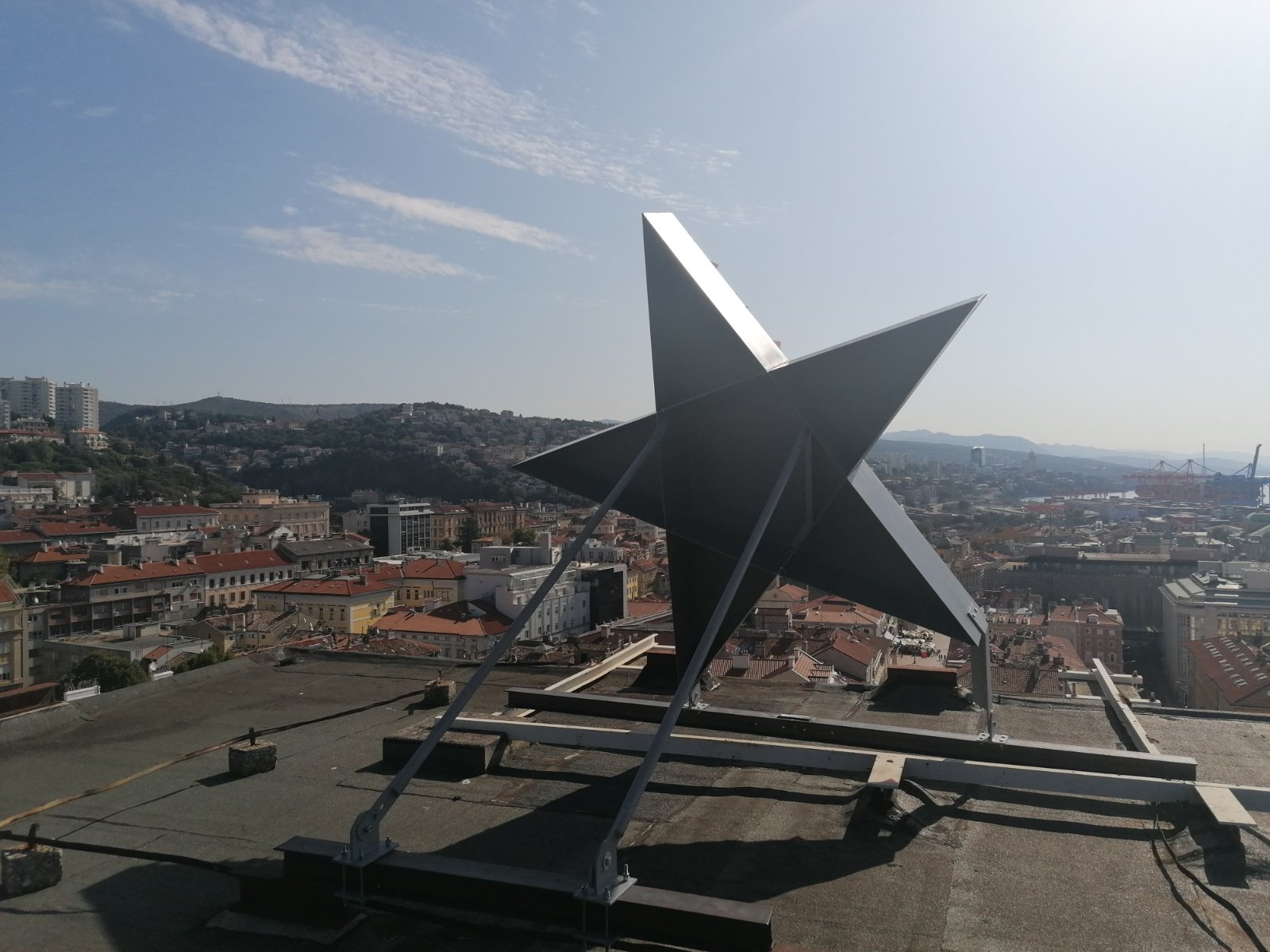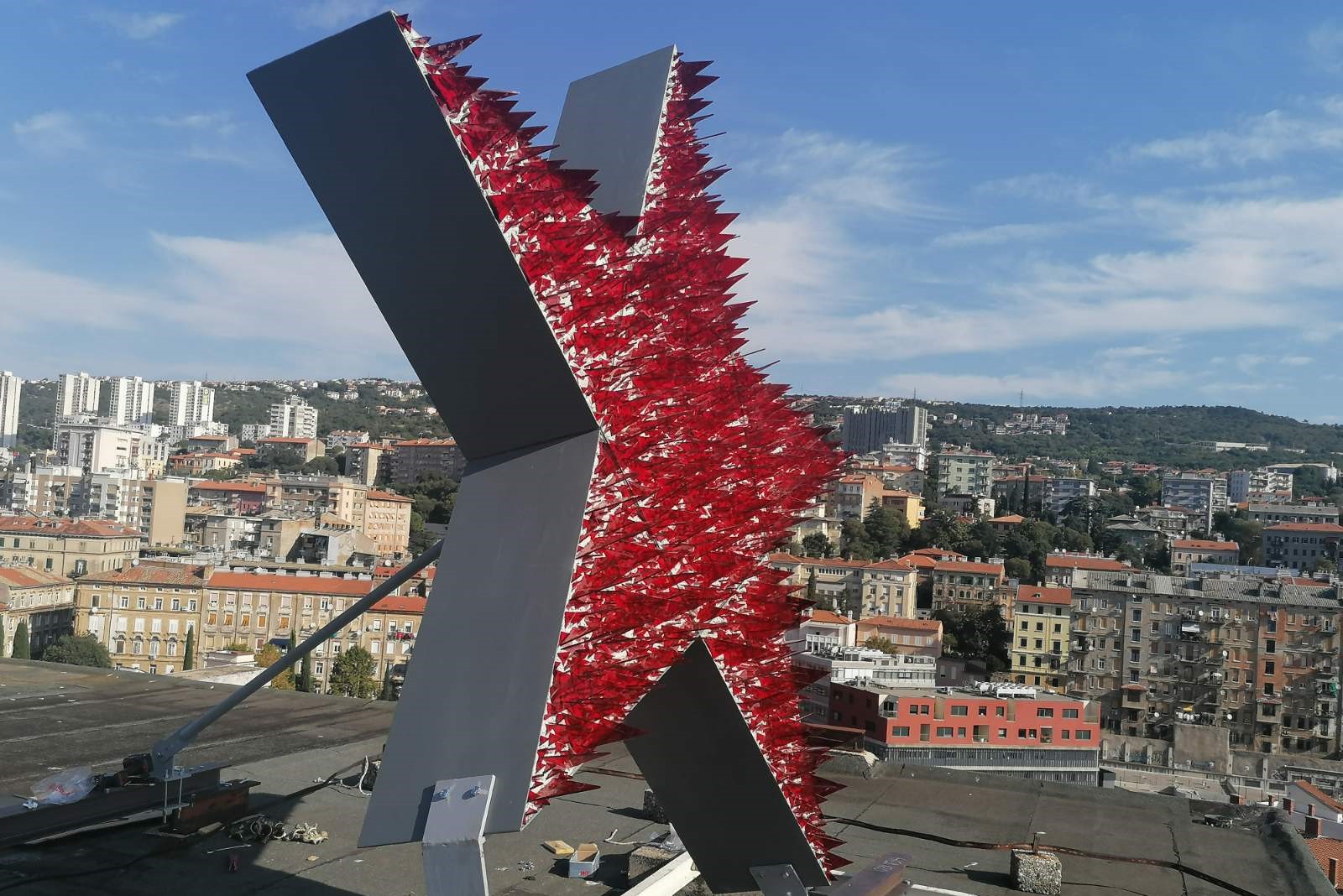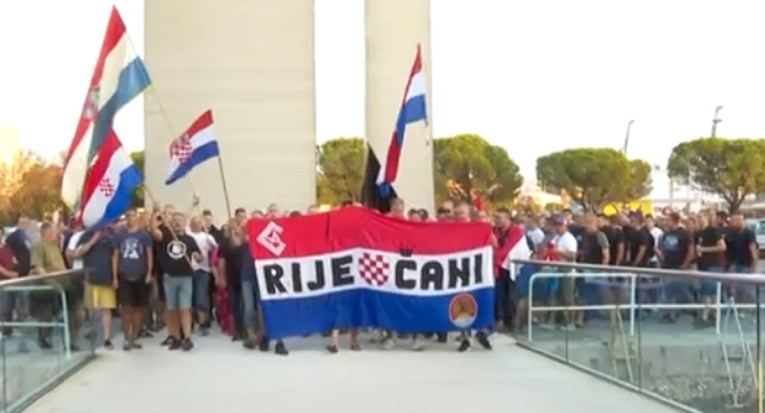September 20, 2020 - The giant red star art installation was today placed on a skyscraper, marking the day the Anti-fascist State Council for the National Liberation of Croatia returned Rijeka to its rightful place, as a city of Croatia
A giant red star today appeared over the skyline in the coastal city of Rijeka. Made from shards of bright red glass, the art installation sparkled in the late summer sun as it peered over the edge of a prominent city centre building. The installation is titled Monument to Red Rijeka - a self-defense monument and is by artist Nemanja Cvijanović.
The red star was positioned on the very day that the Anti-fascist State Council for the National Liberation of Croatia returned Rijeka to its rightful place, as a city of Croatia. Rijeka, along with a huge amount of Croatian territory including Dalmatia and Istria had previously been ceded to Italy during World War II by the Independent State of Croatia (NDH).
The NDH was a puppet state of Nazi Germany and fascist Italy and one of the most-lethal regimes of the 20th century. Between 1941 and 1945 they established 22 concentration camps within the paltry territory their fascist masters allowed them to keep. The regime targeted Serbs, Jews and Roma as part of a large-scale campaign of genocide, as well as anti-fascist or dissident Croats and Muslims. Although concentration camps were originally invented by the British in Africa during the Second Boer War (1899 – 1902), the Second World War was the first time such camps were expressly built as death camps. The Independent State of Croatia (NDH) is the only state in the world to have ever had concentration camps just for children. They were located in Jastrebarsko and Sisak.
Rijeka's red star art installation is part of the city's programme for its designated year as European Capital of Culture. An essential element of Capital of Culture is the celebration of diversity. In Rijeka today, people of many different ethnicities and religions co-exist peacefully. Such a situation would never have been possible nor permitted under fascist rule.
The multi-ethnic and multi-cultural aspects of life in Rijeka today can be traced back to the day that the Anti-fascist State Council for the National Liberation of Croatia returned Rijeka to Croatia and subsequently created a state for all Croatians. It is therefore understandable that the city and its residents should wish to commemorate its liberation and return to Croatia in this way. The red star was the symbol on the flag of the Anti-fascist State Council for the National Liberation of Croatia.
The red star symbol remains a controversial one amongst many Croatians as it is inextricably linked to communism. While the people of Rijeka have the right to commemorate their return to Croatia in any way they wish, some Croatians who don't live in Rijeka - or who don't even live in Croatia - are not happy when symbols of communism are used to celebrate liberation from fascism. Perhaps it should be for the people of Rijeka to decide how they wish to mark such a day and those who live in other territories can stick to deciding how their own local manifestations should look?
One group of angry men took to the streets of Rijeka in protest during the same afternoon the star was positioned. Some of them were seen to carry fascist Croatian flags which bore the symbol used by the NDH. Like the swastika and other Nazi symbols, this fascist flag is outlawed in many places such as Austria and Germany.
All photos © Rijeka 2020 (except screenshot from RTL television)
For the latest travel info, bookmark our main travel info article, which is updated daily.
Read the Croatian Travel Update in your language - now available in 24 languages


